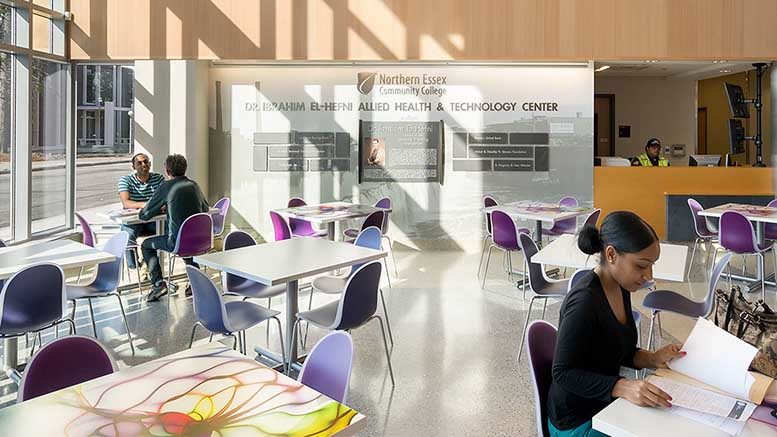During the best of times, the differences between community college students and students at America’s private and public flagship universities are sizable and challenging.
During crises, like the current coronavirus pandemic, they can be staggeringly difficult to reconcile.
This article originally appeared on the Northern Essex Community College (Massachusetts) website. It is reprinted with permission.
As colleges here in Massachusetts like Harvard, MIT, Amherst, Tufts, Emerson, Boston College and the University of Massachusetts announced plans this week to send students home and complete their courses online, community college presidents like me keep getting asked the same questions:
What are you waiting for? When are you going to close, too?
It’s not that simple. Here’s why. According to Opportunity Insights, through an online database of their economic research made available by the New York Times, the median family income of students attending those seven colleges and universities that were among the first to announce that they were “closing” their campuses is $162,014.
Collectively, around 12 percent of the students at those institutions are from the top 1 percent of wealthy families in America — those earning more than $630,000 each year. Only 20 percent come from the bottom 60 percent of poorer families — those earning less than $65,000. That means 80 percent of their students are from more comfortable, upper-middle-income families.
Meanwhile, the median family income for students attending the fifteen community colleges in Massachusetts is $54,933 — over $100,000 less than their more elite counterparts.
Less than 1 percent, or in some cases none, of the students at the Commonwealth’s community colleges come from families at the top of the wage ladder, while well over half (58 percent) are from the bottom.
Fewer available resources
To add to the economic challenges of community colleges, as the chart below demonstrates, there is a tremendous difference in the resources available among private, selective universities like Harvard, MIT and Tufts, which spend an average of $70,000 per year on their students; the University of Massachusetts at $40,000 per year, and the state’s community colleges, at a meager $13,000 per year.
Why is family income and the size of a college’s budget important when deciding whether, when, and how to “close” a community college campus, or suddenly send its students online?
When a university with more affluent students closes its dormitories, issues prorated refunds for housing and meal plans, and converts to online teaching, most of their students return to comfortable homes with family support networks, laptop computers, and broadband internet access. They complete their courses as planned, and as a result, they retain their financial aid, which is largely in the form of private- or university-provided scholarships.
Most community colleges do not have dormitories and meal plans. Our students are older. They work while going to school, and are often raising families of their own. They commute. They also struggle to make ends meet.
According to a recent survey by the Wisconsin HOPE Lab, 47 percent of Massachusetts community college students report that they cannot afford to eat balanced meals, and 49 percent reported some type of housing insecurity during the past year (ranging from poor or unaffordable housing, to crowding, frequent moves, or homelessness).
As the Massachusetts Department of Higher Education’s Student Hunger and Homelessness web site illustrates, every community college in the state has some kind of food pantry or emergency resource center available to assist struggling students.
Because more than a quarter of community college students are parents themselves, most community college campuses offer some kind of reduced-cost, on-site childcare for students, faculty and staff.
And, because most community college students are low-income, they qualify for Pell grants and other forms of need-based financial aid, and they often rely on this aid not only to pay for tuition and books, but to help with rent and putting food on the table.
Challenges with web access
They are also less likely to be tech-ready. A significant number of community college students do not have laptop computers or high-speed internet access at home. According to a 2015 study by the Pew Research Center, among households with an annual income under $50,000, 31.4 percent don’t have broadband internet access; while only 8.4 percent of households over $50,000 lack access to broadband internet.
So, if a community college “closes” and stops offering face-to-face classes, we run the risk of delaying or completely derailing our students’ ability to complete their courses, endangering their financial aid, limiting their access to childcare, food and housing assistance, and pushing them, and perhaps families who depend on them, into more desperate living conditions.
In addition to these economic challenges, community colleges also must consider:
- Campus partnerships: Community colleges are often vital resource hubs for the cities and towns they serve. For example, my college partners with a local non-profit that provides services to adults with disabilities, many of whom are placed in day jobs on our campus. We also operate our region’s career centers, providing assistance for unemployed job-seekers, and we run the largest police academy in the state.
- High school students: By now, nearly every community college in the country provides some form of dual enrollment or “early college” experience for area high school students. At my college, we have more than 500 high school students enrolled in classes this semester, many of whom are bussed onto campus each day.
- Vocational/technical training: Most community colleges offer classes in occupational fields like automotive technology, HVAC, advanced manufacturing, and other high-tech skills that require hands-on laboratory experience that is difficult, or impossible, to offer online.
There are a host of other ways that community colleges are drastically different than better-resourced four-year universities with different missions and student bodies, but you get the point.
None of this means it is impossible for community colleges to change the way we provide instruction to our students and join other segments of higher ed in “social distancing,” reducing crowds on campus, and minimizing the risk of further spreading this pandemic. We are all engaged with making those changes on our campuses right now, and will be rolling them out in the days and weeks to come.
It does mean that we will be making those decisions and changes with the unique needs of our students and the communities we serve first and foremost in our minds.





